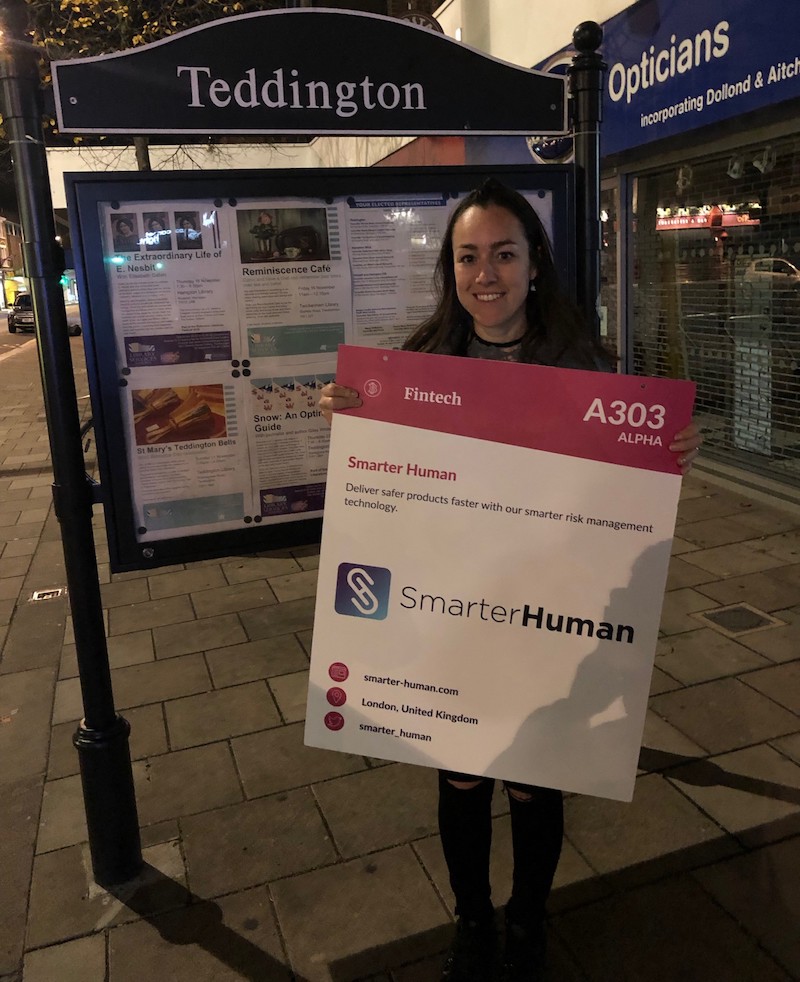Surviving the 3 minute pitch competition
This year I attended Web Summit with Smarter Human on the Alpha startup programme. As part of this we had the opportunity to apply for the PITCH competition. Having tried to explain our Fintech solution to an investor without knowledge of the industry in a 15 minute slot (a story for another day!), I knew this was a hard sell when pitted against consumer products at a cross-industry event. To our surprise we were accepted to compete. After our initial celebration we realised that this meant we had to write and deliver a pitch. Having gone through this and survived I wanted to share how we did this in case this is useful to other people.
What do you want to achieve?
We started with defining what we wanted to achieve with our pitch. What would a success be?
For us this wasn’t winning the Pitch competition (although that would have been nice!). Success for us was having a non-Financial Services audience understanding the problem and what we do at the end of 3 minutes.
With this in mind we sat down and mapped out a story for us to tell.
We had a hard deadline just a couple of days away for submitting pitch materials so we had to create these at the same time as the story. Ideally I would have liked to crack the story before creating the slides but we made do.
This blog on How to fix your shitty pitch is a must read for designing pitch slides, even though it’s targeted at investment pitches. There was also a great talk at Web Summit this year on this which you can watch here.
To improvise or to learn?
I am not generally a fan of scripted pitches. That said, when you have 3 minutes it’s difficult to guarantee anything unscripted will run to time. Even a three syllable ‘how-ev-er’ takes up precious seconds when compared to a ‘so’. After running way over time when practising trying to improvise I decided to trade some natural delivery for loose scripting.
I wrote what I wanted to say and then timed myself reading this out slowly until I had content to fill just under 3 minutes. Once I had a version I was happy with I recorded myself saying it.
When you listen to a song repeatedly you quickly find the lyrics make your way into your head almost subconsciously. I decided to try the same with my pitch and listen to this 3–4 times a day. Goodbye Hamilton, hello Smarter Human pitch. Yes I did hate the sound of my own voice after a few days in but I also learnt my pitch with minimal effort and with only 10–15 minutes a day.
Listening to it also helped me identify phrases and parts which I didn’t like. Each morning I would do a new recording making little changes.
I also ran through the pitch with friends and family. I would advise to test early as I did a run through with my partner a day before the competition and then was left trying to make last minute changes.
Presenting the pitch
We had slot 7 out of 8 at 4pm on the first day. It wouldn’t have been my first choice as we also had our Alpha startup stand that day but it was nothing that a good coffee couldn’t fix before.
The standard of pitches was high which was both encouraging and nerve wracking as I watched them. The other people pitching were also very friendly.
How did it go? We didn’t win but I was happy with how it went and it was a great learning experience which I would repeat.
You can see our final pitch here if you want to make up your own mind.
The overall PITCH winner was Wayve, a company developing self-driving cars which learn how to drive using machine learning as opposed to being given a set of rules to follow. You can watch the PITCH final here.
What I learnt
Killer ideas are king. This was what really determined the winner rather than the specific published marking criteria.
Be clear about use cases. We had a question on how our product would be used in a real life scenario. This is something we are working on articulating better.
Show rather than tell. All three of the finalist included a demo which they talked over during the pitch. This really brought their ideas and products to life.

